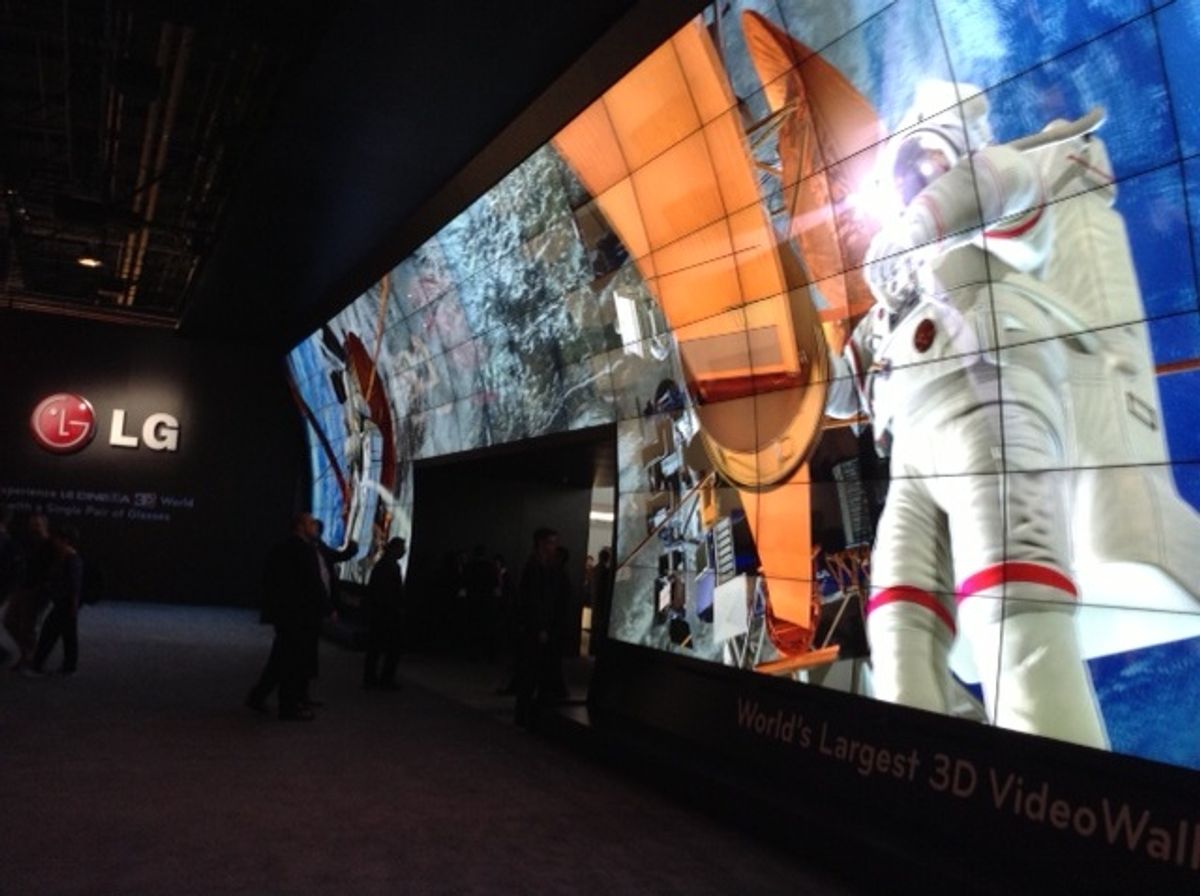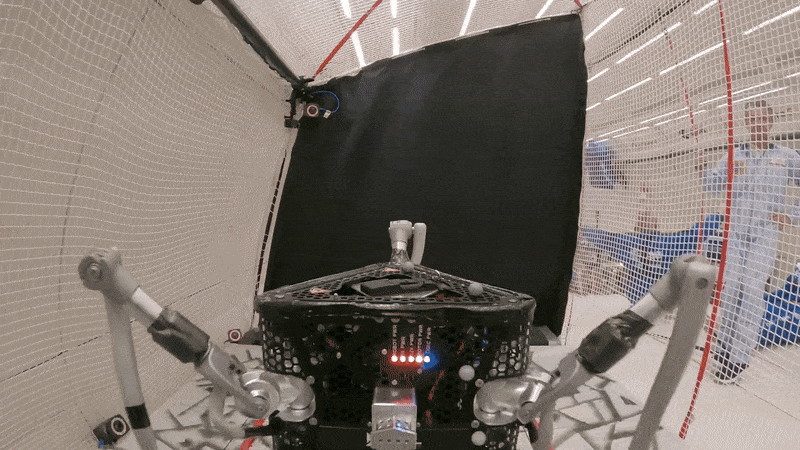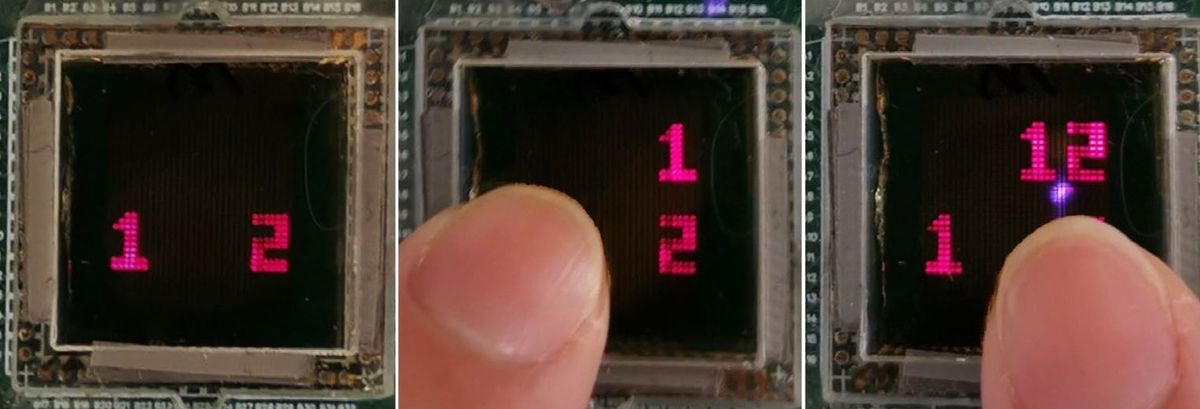At the 2013 Consumer Electronics Show, back-to-back visits to LG and Panasonic reveal two very different approaches to selling, and maybe making, televisions. At LG the focus was on display technologies, picture quality, size, and form factors. Panasonic put its Smart TV features front and center.
Make the first right turn off the corridor of Central Hall, in the Las Vegas Convention Center, and you’re facing what LG bills as the “world’s largest 3-D video wall.” Put on 3-D glasses, and gawk for several minutes.
When you finally do make it in, there are more televisions, divided by technology: more 3-D OLEDs (including a curved screen [below]!), plasma TVs, and what LG calls Ultra HD TVs.
At Panasonic, much of the vast booth space was devoted demos that played out one scenario of smart television or another. At one popular one, you could draw on a plasma TV with a light pen, superimposing the kind of whiteboard diagram that pro football commentators use. The image can be saved and sent to a tablet and thence e-mailed to a friend.
At another station, I saw a voice-commanded Google search. At both Panasonic and LG you could see streaming services, such as Netflix, Hulu, and Pandora directly on the TV—no Boxee, Apple TV, or Roku box needed.
At yet another station, Panasonic showed a proof-of-concept of some friends all chatting by text message (like an old-style AOL chatroom), with the messages showing up on at the bottom portion of a television screen showing the program that everyone is watching. You could imagine this scenario extended—I wouldn’t mind seeing a running commentary of messages from my favorite movie critic (maybe just his or her tweets) during the Academy Awards show.
LG had a few user scenarios—collaborative picture drawing between users of 5-inch tablets, for example—but they mostly weren’t very well developed, nor very smart.
When it comes to television and appliances, “smart” seems to mean at least three related but distinct things. First, there’s the use of data that sits in the cloud or in the Internet itself (e.g., the refrigerator’s recipes; Google search); second, there’s interactivity with a tablet or phone—it seems clear, by the way, that these are the remote controls of the future. (We’re going to need a universal app, just like we’ve needed universal remotes.) Third, “smart” sometimes just means “social”—such as allowing interpersonal gaming (even in different locations) or the superimposed chatroom.
There’s still plenty of room for our appliances to get smarter. And I’m not sure how much of a premium people are willing to pay for appliances that are only semi-smart. I do think, though, that a lot of televisions are going to get sold this year—and people will increasingly interact with them with their tablets and phones. Just moving the program guide to a tablet is a huge win.









